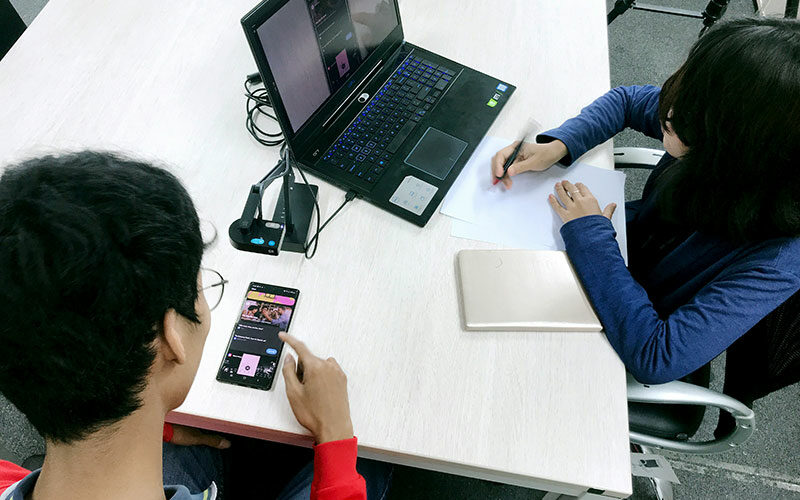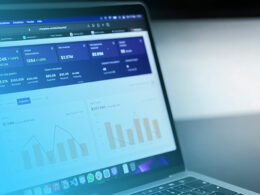How AI is Revolutionizing Automated Testing in 2024

In the ever-evolving landscape of software development, the integration of automated testing has become indispensable for ensuring the quality, reliability, and performance of applications. However, traditional automated testing methods often struggle to keep pace with the increasing complexity and diversity of modern software systems. This is where AI test automation emerges as a game-changer. By harnessing the power of artificial intelligence (AI), test automation processes can transcend the limitations of manual scripting and static test cases. In 2024, AI test automation stands at the forefront of innovation, promising to revolutionize the way software is tested and validated. This article explores the transformative impact of AI test automation, offering insights into its evolution, advantages, challenges, and future prospects.
Evolution of Automated Testing
The evolution of automated testing has witnessed a progressive transition from rule-based, deterministic approaches to more adaptive and intelligent methodologies. Traditional automated testing relied heavily on predefined scripts and manual intervention, leading to limited test coverage and scalability issues. However, with advancements in AI and machine learning, automated testing has undergone a paradigm shift. AI-powered testing tools can analyze vast amounts of data, learn from past testing experiences, and autonomously adapt test cases to evolving software architectures. This evolution marks a departure from rigid, script-based testing towards dynamic, data-driven approaches, enabling development teams to achieve higher levels of efficiency and effectiveness in their testing efforts.
Advantages of AI in Automated Testing
The incorporation of AI into automated testing offers a multitude of advantages that significantly enhance the testing process. One of the key benefits is the ability to achieve unparalleled levels of test coverage and accuracy. Traditional testing methods often struggle to address complex scenarios and edge cases, leading to gaps in test coverage and potential vulnerabilities. AI-powered testing tools, on the other hand, excel in analyzing diverse data sets, identifying critical paths, and generating test cases that comprehensively validate the software under test. This increased test coverage not only reduces the likelihood of defects but also improves the overall quality and reliability of the software.
AI-Powered Test Automation Tools
In 2024, the market will be flooded with AI-powered test automation tools that offer advanced features and capabilities. These tools leverage AI algorithms to streamline various aspects of the testing process, including test case generation, execution, and result analysis. For instance, tools like Trinetix’s ai test automation platform utilize machine learning models to predict optimal testing scenarios, prioritize test cases, and identify potential areas of risk. By harnessing the power of AI, these tools empower development teams to achieve higher levels of test automation, efficiency, and accuracy.
Leveraging AI for Test Data Generation
AI-driven test data generation represents a significant advancement in automated testing. Traditional approaches to test data generation often rely on manually curated datasets, which may not accurately represent real-world scenarios. However, AI algorithms can analyze application requirements and user behaviors to generate synthetic test data that closely mimic production environments. This not only improves test coverage but also enhances the effectiveness of test cases in uncovering hidden bugs and vulnerabilities.
Predictive Analytics for Test Optimization
One of the most promising applications of AI in automated testing is predictive analytics. By analyzing historical testing data and identifying patterns, AI algorithms can predict potential areas of failure and prioritize testing efforts accordingly. This proactive approach to test optimization enables development teams to allocate resources more efficiently, focusing on areas of the application that are most likely to experience issues. Furthermore, continuous feedback loops and machine learning algorithms ensure that testing strategies evolve over time, further improving the overall quality of the software.
Overcoming Challenges and Limitations
Despite the numerous benefits of AI in automated testing, several challenges and limitations must be addressed. One of the primary concerns is the potential for bias in AI algorithms, which can skew test results and undermine the effectiveness of testing processes. Additionally, integrating AI-driven testing tools with existing workflows and methodologies may require significant adjustments and investments in training and infrastructure. Moreover, ensuring the transparency and interpretability of AI-driven testing processes is essential for building trust and confidence among stakeholders.
Future Trends and Opportunities
Looking ahead, the future of AI in automated testing is promising, with emerging trends shaping the landscape. Integration with blockchain and IoT, accelerated adoption, and advancements in AI research present new avenues for innovation and collaboration in the software development community.
- Integration of AI with blockchain technology for secure and transparent testing environments.
- Leveraging AI for testing IoT devices and systems, ensuring compatibility, reliability, and security.
- Adoption of AI-driven testing methodologies to accelerate DevOps practices and continuous integration/continuous deployment (CI/CD) pipelines.
- Exploration of AI-powered autonomous testing, where intelligent algorithms autonomously generate, execute, and analyze test cases without human intervention.
- Implementation of AI-driven anomaly detection for proactive identification and mitigation of potential issues in production environments.
- Utilization of AI for predictive maintenance testing, enabling preemptive identification and resolution of software defects before they impact end-users.
- Integration of AI-driven testing with low-code/no-code development platforms, simplifying the testing process for citizen developers and non-technical stakeholders.
- Expansion of AI-powered test automation to non-functional testing areas such as security testing, performance testing, and usability testing.
- Collaboration between AI and human testers through augmented intelligence approaches, where AI augments human capabilities in testing tasks, leading to more efficient and effective testing processes.
- Emphasis on ethical AI practices in automated testing, ensuring fairness, transparency, and accountability in AI-driven testing algorithms and processes.
Conclusion
In conclusion, the integration of AI into automated testing represents a paradigm shift in software development, offering unparalleled levels of efficiency, accuracy, and scalability. By leveraging the power of AI algorithms, development teams can achieve higher levels of test coverage, identify critical defects, and optimize testing strategies for maximum effectiveness. However, realizing the full potential of AI in automated testing requires addressing various challenges and limitations, including bias, integration complexities, and transparency issues. Nevertheless, with continued advancements in AI research and development, the future of automated testing looks brighter than ever, promising to reshape the software testing landscape in profound and transformative ways.
- Top React Native Libraries for App Development - May 9, 2024
- Angular’s Applications: What is Angular Used For? - May 9, 2024
- Drive and Earn: Essential Apps Like Doordash - May 8, 2024








